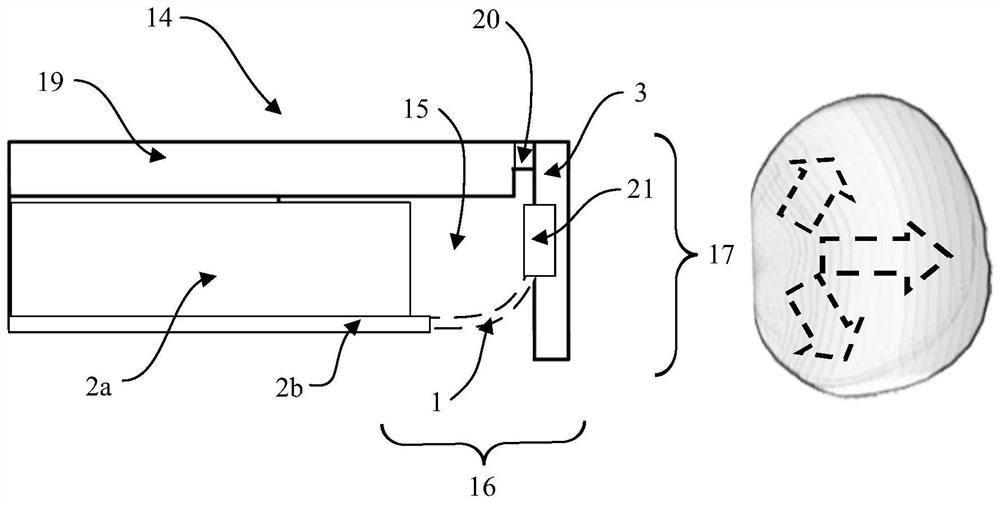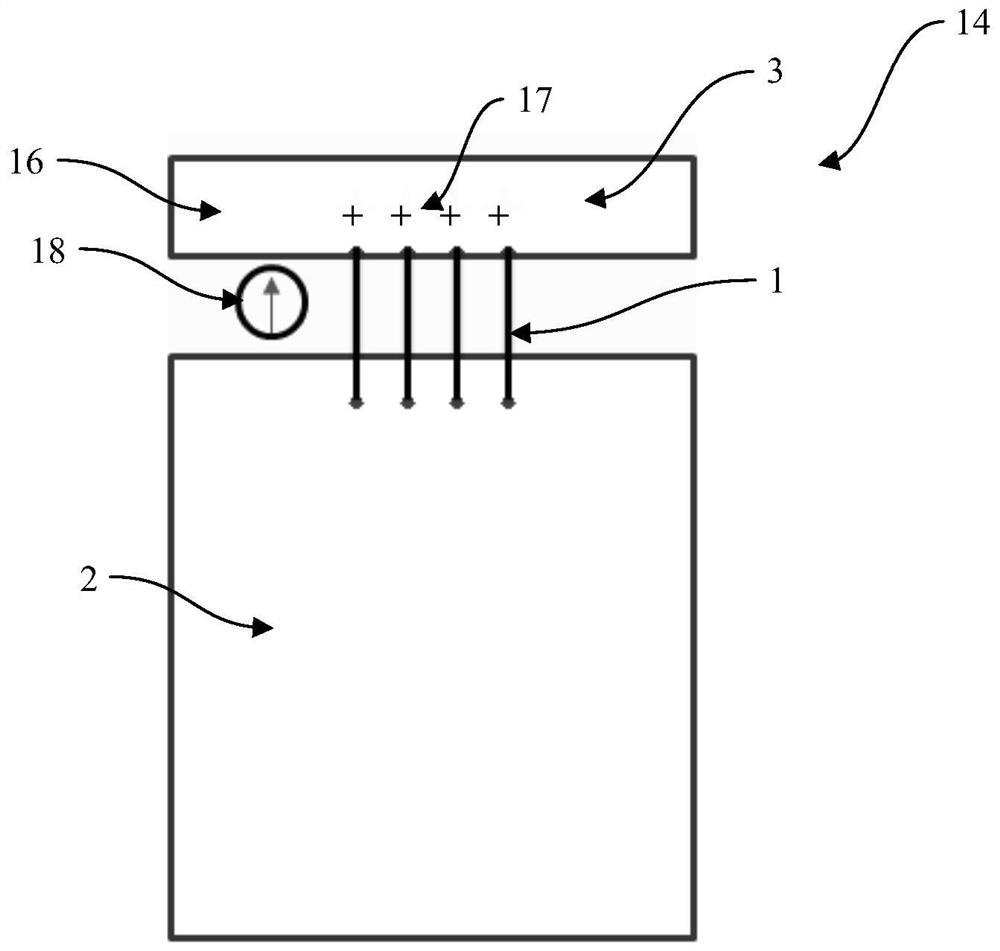Transmission line for radiofrequency range current
A radio frequency range, transmission line technology, applied in the field of transmission lines, which can solve problems such as limited beam coverage, limited space, and inactive display status
- Summary
- Abstract
- Description
- Claims
- Application Information
AI Technical Summary
Problems solved by technology
Method used
Image
Examples
Embodiment Construction
[0045] Figure 1a-1b An electronic device 14 is shown comprising: a display 19 , a first conductive element 2 , a second conductive element 3 , a first antenna 16 and a second antenna 17 . The first conductive element 2 may be a device chassis 2a or a printed circuit board (PCB for short) 2b, and the second conductive element 3 may be a metal frame. The display 19 and the metal frame 3 may at least partially surround the device chassis 2a and the printed circuit board 2b. The radio frequency radiation generated by the first antenna 16 and the second antenna 17 can be transmitted through a dielectric gap 20 separating the display 19 from the metal frame 3 .
[0046] The first conductive element 2 and the second conductive element 3 are separated by a non-conductive volume 15 within which the first antenna 16 and the second antenna 17 are at least partially arranged. A first transmission line 18 connects the first conductive element 2 to the first antenna 16 across the non-con...
PUM
 Login to View More
Login to View More Abstract
Description
Claims
Application Information
 Login to View More
Login to View More - R&D Engineer
- R&D Manager
- IP Professional
- Industry Leading Data Capabilities
- Powerful AI technology
- Patent DNA Extraction
Browse by: Latest US Patents, China's latest patents, Technical Efficacy Thesaurus, Application Domain, Technology Topic, Popular Technical Reports.
© 2024 PatSnap. All rights reserved.Legal|Privacy policy|Modern Slavery Act Transparency Statement|Sitemap|About US| Contact US: help@patsnap.com










